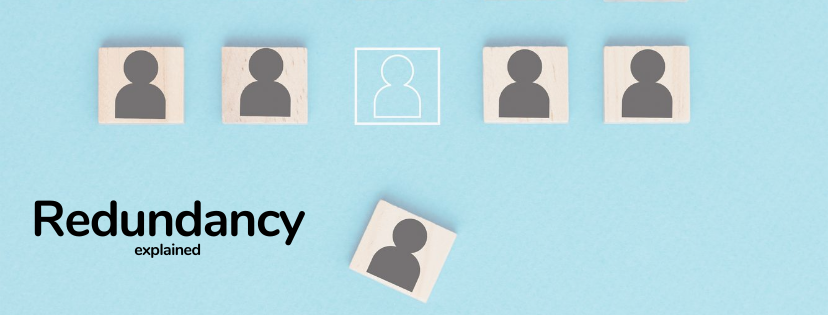If a Company Goes Bust Who Pays Redundancy? Lawful Insights for UK Personnel
If a Company Goes Bust Who Pays Redundancy? Lawful Insights for UK Personnel
Blog Article
Exploring the Interplay Between Business Redundancy and Business Versatility for Future Development
In the dynamic landscape these days's service globe, the detailed relationship between firm redundancy and business flexibility emerges as an important variable for continual development and success. Business frequently encounter the obstacle of striking a delicate equilibrium in between maintaining a degree of redundancy to mitigate dangers and cultivating adaptability to react promptly to the ever-evolving market demands. This delicate interaction holds the key to not only enduring in turbulent times however additionally flourishing when faced with unpredictability. As we explore the diverse measurements of this interaction, intriguing insights right into just how organizations navigate these complexities to lead the way for future growth await.
Importance of Company Redundancy
Company redundancy is an essential aspect that improves organizational resilience and reduces operational risks. By incorporating redundancy measures within the organizational structure, firms can better withstand unexpected disruptions and fluctuations in business environment. Redundancy offers as a critical barrier, enabling business to adapt and react properly to unanticipated difficulties without jeopardizing vital operations.
One key aspect of the importance of company redundancy is its duty in making certain connection during times of crisis. When faced with abrupt modifications or emergencies, redundant systems, sources, or employees can tip in to preserve vital features and stop prevalent interruptions. This continuity not only safeguards the company's reputation and customer depend on however additionally lessens financial losses and functional downtime.

Strategies for Organizational Flexibility

An additional important approach is purchasing technology and facilities that can sustain adaptability and scalability. Applying digital tools, automation, and data analytics can enhance procedures, boost efficiency, and provide important insights for informed decision-making. Furthermore, producing adaptable organizational structures that enable fast modifications to market characteristics and consumer needs is important for staying competitive in a quickly progressing setting. By proactively identifying potential disruptions and opportunities, organizations can proactively adapt and flourish in an ever-changing company landscape.
Harmonizing Redundancy and Versatility
Achieving an unified balance between functional redundancy and organizational flexibility is critical in browsing the intricacies of a dynamic organization atmosphere. Redundancy within a company supplies a security net, making certain continuity and stability in operations. However, an extra of redundancy can bring about inadequacies and prevent flexibility to changing market problems. On the other hand, business versatility permits firms to react promptly to outside disruptions and take brand-new opportunities. Striking the appropriate balance between redundancy and flexibility is a delicate process that calls for a deep understanding of the organization's goals, sector characteristics, and danger resistance.
To attain this balance, companies need to conduct routine evaluations of their operations to determine areas where redundancy is needed for danger reduction and where versatility can drive technology and development. Applying adaptable frameworks, cultivating a society of continual understanding and renovation, and urging open interaction throughout all degrees of the company are vital approaches to integrate redundancy and flexibility successfully. By straightening these 2 important aspects, companies can position themselves for lasting development and success in an ever-changing service landscape.
Instance Researches on Adaptation Success
In examining circumstances of successful organizational adjustment, it ends up being noticeable that the interaction in between functional redundancy and versatility is a specifying aspect in shaping durable companies. A DVD rental solution, Netflix demonstrated impressive adaptability by transitioning right her response into a streaming platform when digitalization interfered with the market. These instance studies underscore the value of operational redundancy coupled with organizational flexibility in promoting long-lasting growth and competition.
Structure Durability for Future Development
Building strength for future growth calls for a calculated alignment of functional processes with market characteristics and emerging patterns. Companies need to adapt to transforming environments by cultivating a culture of versatility, innovation, see this here and constant improvement.
Additionally, fostering solid relationships with stakeholders, such as clients, staff members, providers, and the area, is vital for weathering unpredictabilities and preserving trust fund and support during stormy times. Efficient interaction and transparency play a crucial role in structure resilience, as they aid facilitate and line up assumptions partnership in browsing unpredictabilities.
Additionally, companies require to focus on learning and development efforts to upskill staff members and equip them with the required tools to adapt to altering conditions. By spending in their workforce, business can improve their flexibility and dexterity, ultimately strengthening their durability for lasting future development.
Verdict

In the dynamic landscape of today's company globe, the intricate partnership in between company redundancy and business flexibility emerges as a critical factor for sustained development and success. Firms typically encounter the obstacle of striking a delicate balance in between keeping a level of redundancy to you could try these out alleviate threats and fostering versatility to react promptly to the ever-evolving market needs.To achieve this balance, business need to carry out normal analyses of their operations to identify areas where redundancy is necessary for risk mitigation and where flexibility can drive technology and growth.In conclusion, the interplay between business redundancy and business versatility is critical for future development. Structure strength via a mix of redundancy and adaptability will guarantee that business are prepared for the challenges of the future.
Report this page